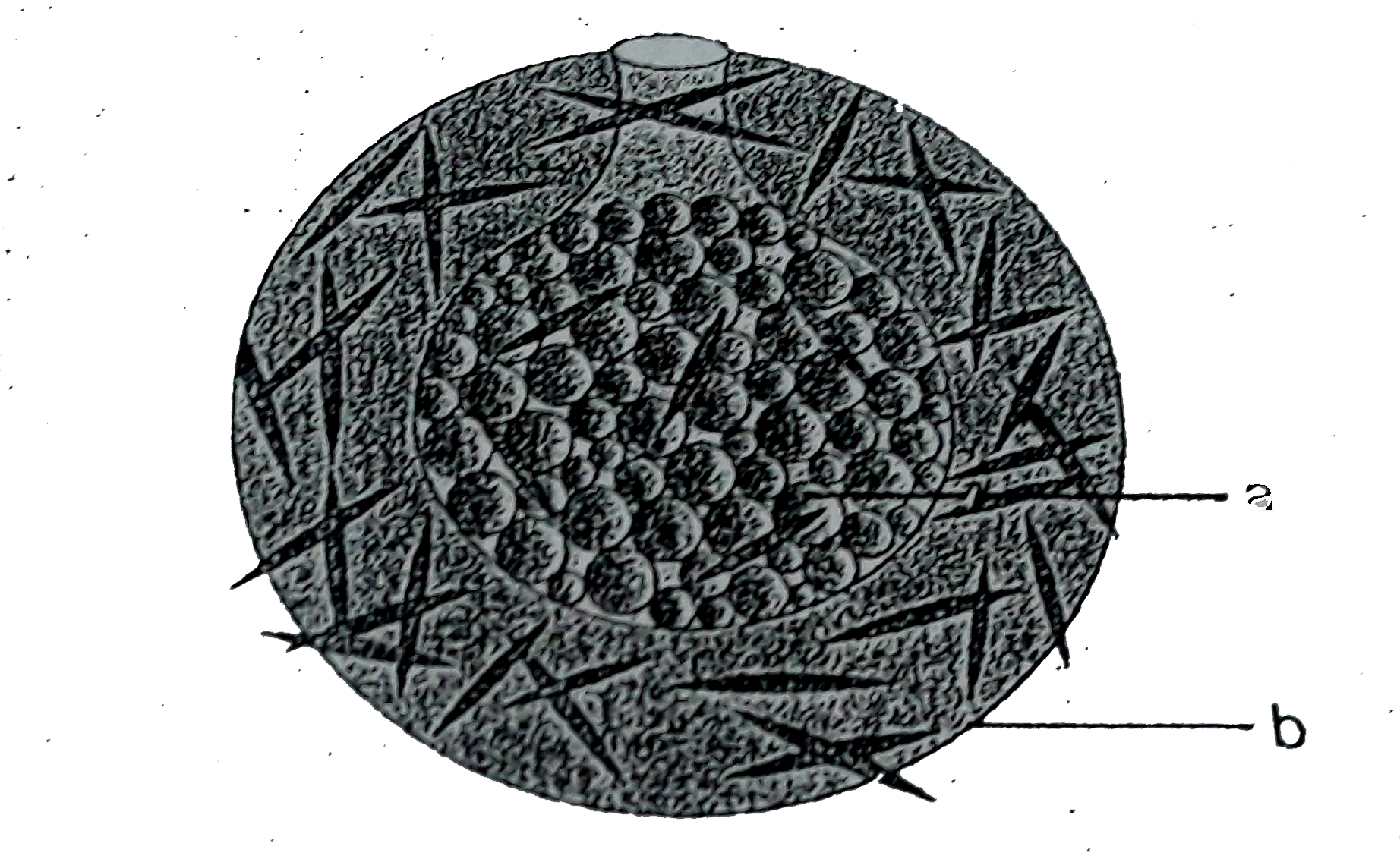Describe budding with reference to gemmulation.
Step-by-Step Text Solution:
1. Definition of Budding: Budding is a form of asexual reproduction where a new organism develops from an outgrowth or bud on the parent organism. This process allows for the creation of genetically identical offspring.
2. Introduction to Gemmulation: Gemmulation is a specific type of budding that occurs in certain organisms, particularly in sponges (phylum Porifera). It is characterized by the formation of specialized structures called gemmules.
3. Occurrence in Sponges: In sponges, gemmulation is a form of internal budding. This process takes place within the spongocoel, which is the central cavity of the sponge.
4. Formation of Gemmules: During gemmulation, the sponge produces buds that develop into gemmules. These gemmules are clusters of cells that are encased in a protective layer, allowing them to survive unfavorable environmental conditions.
5. Function of Gemmules: The gemmules can remain dormant during harsh conditions (like drought or extreme temperatures) and can later develop into new sponges when the environment becomes favorable again.
6. Conclusion: Thus, budding in the context of gemmulation is a vital reproductive strategy for sponges, enabling them to survive and propagate in varying environmental conditions.
Topper's Solved these Questions
- BOOK - ICSECHAPTER - REPRODUCTION IN ORGANISMSEXERCISE - PREVIOUS YEAR.S BOARD PAPER QUESTIONS (A) ( Very Short Answer Type Questions) (1 mark each)9videos
REPRODUCTION IN ORGANISMS
- BOOK - ICSECHAPTER - REPRODUCTION IN ORGANISMSEXERCISE - PREVIOUS YEAR.S BOARD PAPER QUESTIONS (B) ( Short Answer Type-I Questions) (2 mark each)6videos
REPRODUCTION IN ORGANISMS
- BOOK - ICSECHAPTER - REPRODUCTION IN ORGANISMSEXERCISE - PRACTICE QUESTIONS (C)( Short Answer Type-II Questions) (3 Marks each)15videos
REPRODUCTION IN ORGANISMS
- BOOK - ICSECHAPTER - QUESTION PAPER 2022 TERM 1EXERCISE - MULTIPLE CHOICE QUESTIONS45videos
QUESTION PAPER 2022 TERM 1
- BOOK - ICSECHAPTER - REPRODUCTIVE HEALTHEXERCISE - SOURCE BASED QUESTIONS23videos
REPRODUCTIVE HEALTH
Similar Questions
Describe budding in yeast.
View SolutionDescribe natural selection with reference to industrial melanism.
View SolutionA bud is
View SolutionDuring budding in yeast
View SolutionExternal budding is present in
View SolutionDescribe The general characteristics of transition elements with special reference to the following:
CatalystView SolutionSeed bud is
View SolutionThe basic forms of asexual reproduction are fission, budding gemmulation and fragmentation. Binary fission is common among
View SolutionLook at the given figure and find out the statements wrong regarding the gemmule formation

A. b refers to an archeocyte and a refers to a gemmule
B. Gemmule formation takes place only in marine
C. On germination , each gemmule gives rise to many offsprings
D. Gemmule formation is a kind of spore formationView SolutionLook at the given figure and find out the statements wrong regarding the gemmule formation

A. b refers to an archeocyte and a refers to a gemmule
B. Gemmule formation takes place only in marine
C. On germination , each gemmule gives rise to many offsprings
D. Gemmule formation is a kind of spore formationView Solution

